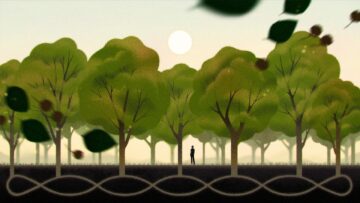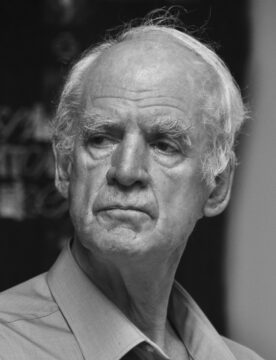Yascha Mounk at Persuasion:
 America is in deep, deep trouble.
America is in deep, deep trouble.
Before Thursday’s debate, the leading contender to win the upcoming presidential election was already Donald Trump, a man whose first stint in the White House provided all the necessary evidence that he is spectacularly ill-suited for the job. During that term in office, Trump ruled rashly and selfishly. He lavished praise on his appointees before firing scores of them for incompetence or insubordination. He picked constant fights with the independent institutions that preserve the separation of powers. And when he lost a hard-fought race, he refused to concede defeat, inspiring a mob to assault Congress, and breaking the key norm that has sustained the American Republic for the past centuries.
After Thursday’s debate, it has become painfully obvious that the only man who stands between Trump and the White House is no longer mentally fit for the job.
More here.

 THOM GUNN WAS THE GREAT RHAPSODE OF RISK
THOM GUNN WAS THE GREAT RHAPSODE OF RISK It didn’t take long. From the very start of Thursday’s CNN debate between Donald Trump and Joe Biden, the question was not so much whether Biden was losing but exactly how much damage it would do to the President’s reëlection campaign. His first shaky answers, it turned out, were no outlier: Biden, his voice raspy and often unclear, struggled for the entirety of the debate, an agonizing hour and a half that, amazingly enough, Biden’s own campaign had sought out in an effort to make up ground against Trump, the defeated,
It didn’t take long. From the very start of Thursday’s CNN debate between Donald Trump and Joe Biden, the question was not so much whether Biden was losing but exactly how much damage it would do to the President’s reëlection campaign. His first shaky answers, it turned out, were no outlier: Biden, his voice raspy and often unclear, struggled for the entirety of the debate, an agonizing hour and a half that, amazingly enough, Biden’s own campaign had sought out in an effort to make up ground against Trump, the defeated,  Thursday night’s
Thursday night’s  You are standing on a boat that is drifting down a placid river. You watch the trees on the shore glide along. For a moment, it looks like the trees themselves are moving – not your boat. But this, of course, is mere appearance: the trees are still, and it is your boat that moves. This parallax effect was described by medieval philosophers, but it may be more familiar in another form: when you’re sitting on a train slowly rolling out of the station, it can seem like it is the stationary train next to yours that is departing instead.
You are standing on a boat that is drifting down a placid river. You watch the trees on the shore glide along. For a moment, it looks like the trees themselves are moving – not your boat. But this, of course, is mere appearance: the trees are still, and it is your boat that moves. This parallax effect was described by medieval philosophers, but it may be more familiar in another form: when you’re sitting on a train slowly rolling out of the station, it can seem like it is the stationary train next to yours that is departing instead. For some writers, some lovers, some readers, the physical and the verbal are the same. With erotica, I’ve found, there’s no way to lose. Best case scenario: you get turned on. Second best: you laugh. Worst case: you wonder why you didn’t get turned on or laugh, and you have a good think.
For some writers, some lovers, some readers, the physical and the verbal are the same. With erotica, I’ve found, there’s no way to lose. Best case scenario: you get turned on. Second best: you laugh. Worst case: you wonder why you didn’t get turned on or laugh, and you have a good think. Each summer, like clockwork, millions of beech trees throughout Europe sync up, tuning their reproductive physiology to one another. Within a matter of days, the trees produce all the seeds they’ll make for the year, then release their fruit onto the forest floor to create a new generation and feed the surrounding ecosystem.
Each summer, like clockwork, millions of beech trees throughout Europe sync up, tuning their reproductive physiology to one another. Within a matter of days, the trees produce all the seeds they’ll make for the year, then release their fruit onto the forest floor to create a new generation and feed the surrounding ecosystem. ‘I
‘I W
W WHAT IS A GOOD DEATH?
WHAT IS A GOOD DEATH? Over the last several decades, the digital revolution has changed nearly every aspect of our lives.
Over the last several decades, the digital revolution has changed nearly every aspect of our lives.  Taylor’s new book is formidably chewy, with page after page featuring passages of Hölderlin, Novalis, and Rilke, offered both in the original German and in translation. Long analyses of
Taylor’s new book is formidably chewy, with page after page featuring passages of Hölderlin, Novalis, and Rilke, offered both in the original German and in translation. Long analyses of  In Glynnis MacNicol’s second memoir,
In Glynnis MacNicol’s second memoir, 